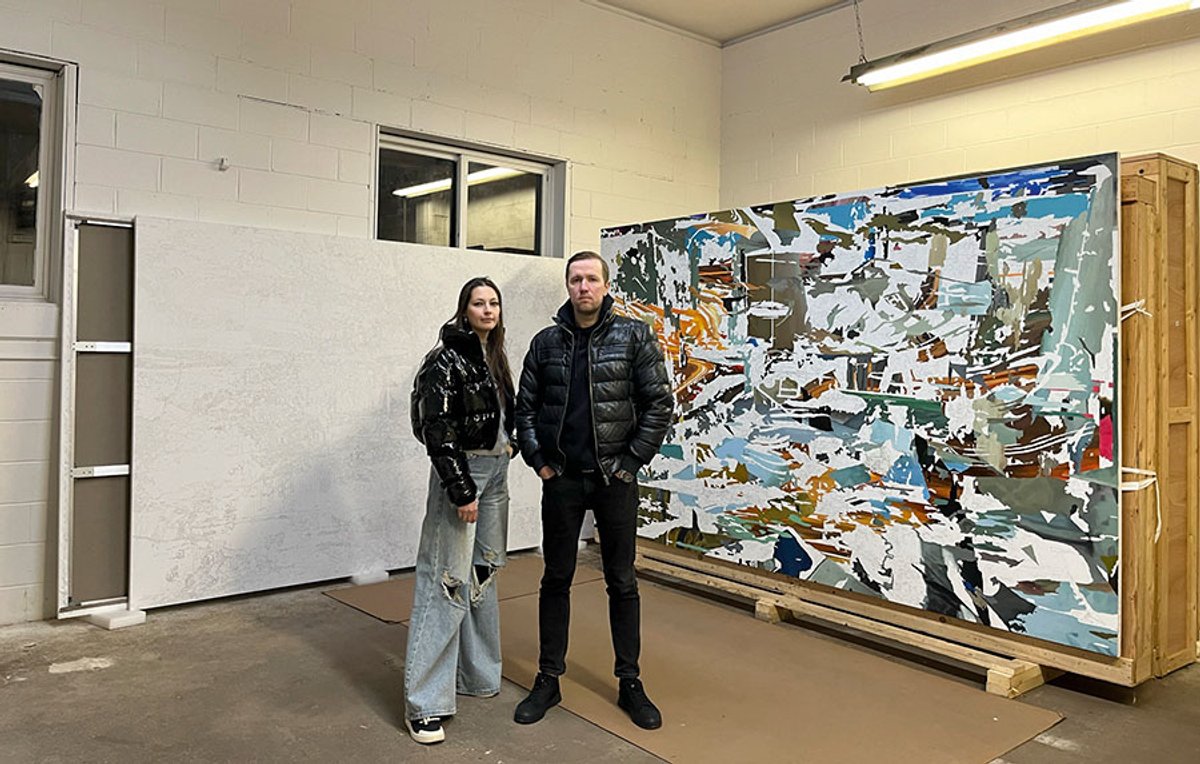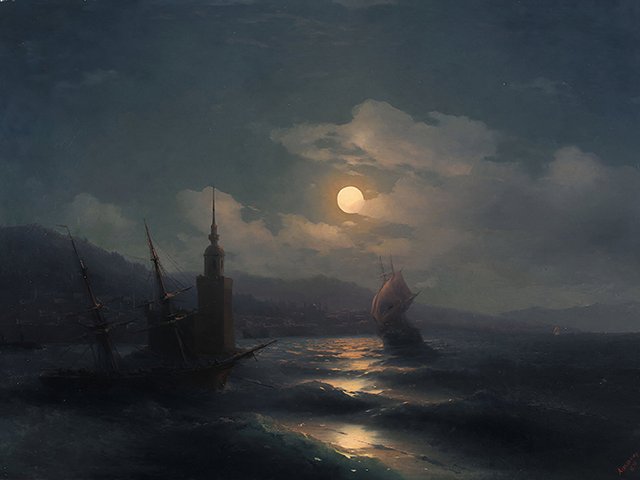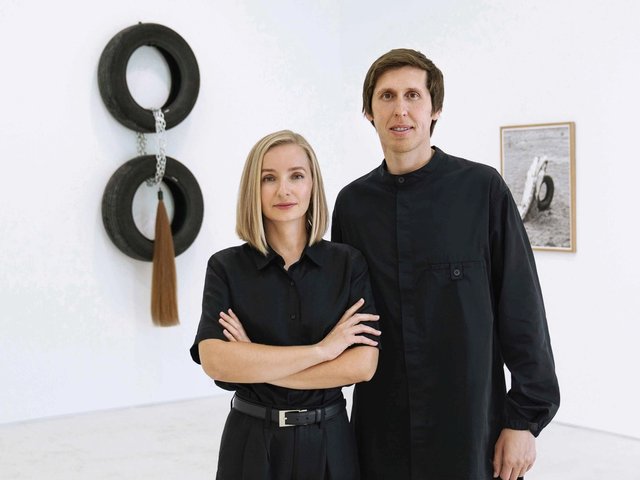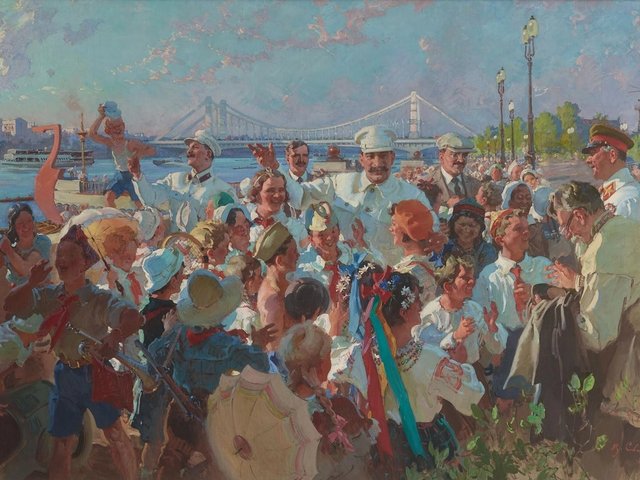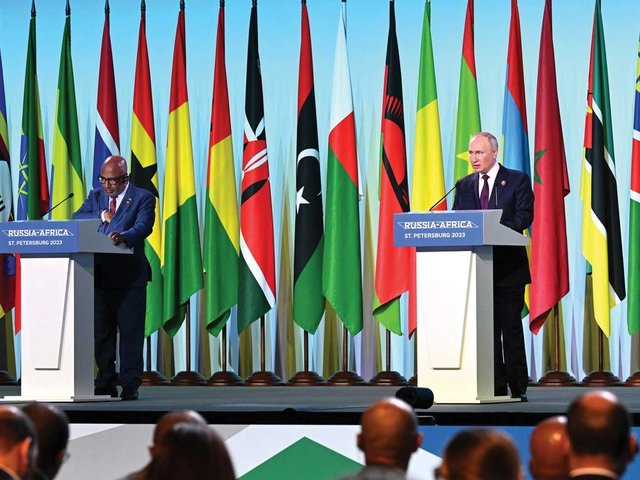The Something Machine, an art gallery named after a line in a Samuel Beckett play about waking purgatory and located at a gas station on Long Island, is the new artistic home of Russian artists Dmitry Okruzhnov and Maria Sharova. The couple, known for creating monumental abstract canvases, immediately opposed Russia’s 2022 invasion of Ukraine. Okruzhnov stayed out of the public eye to avoid being caught in Vladimir Putin’s mobilisation and sent to the front.
They left their studio in a Soviet-era Constructivist house of culture called Nardom in the town of Kineshma on the banks of the Volga River and arrived in Bellport in 2024. Now they are working in the high-ceilinged, light-filled storage space behind the gallery, which is adjacent to the gas station’s convenience store, using the shipping crates for their paintings as an improvised easel to make new works.
The curator Jeffrey Uslip, who co-founded The Something Machine with Peter Boris, an executive vice president at Pace in New York, during the Covid-19 pandemic, has fielded politically sensitive shows before. As the chief curator and deputy director for exhibitions and programmes at the Contemporary Art Museum St Louis, he was criticised for organising an exhibition by Kelley Walker that included images of Black victims of police brutality. At the Venice Biennale in 2022 he co-curated the Malta Pavilion, reimagining Caravaggio’s Beheading of St John the Baptist and its social implications as a rain of molten steel.
Uslip had already ordered three paintings for shipment from Okruzhnov and Sharova in 2021. He learned about them during research for a project called Geopolitical Abstractions, which led to an Instagram introduction and, after the invasion, a lengthy application process for O-1 visas, granted to those who demonstrate extraordinary ability in their field.
“We don’t have a television,” Sharova tells The Art Newspaper, explaining how they avoided Russian state propaganda. But their work precisely captures the physical and philosophical ruins of the post-Soviet and post-internet society. They source images of interiors online, turn them into computer collages and then transfer them to canvas. They start as pencil drawings, which the artists turn into paintings of intricately layered fragments with no beginning or end.
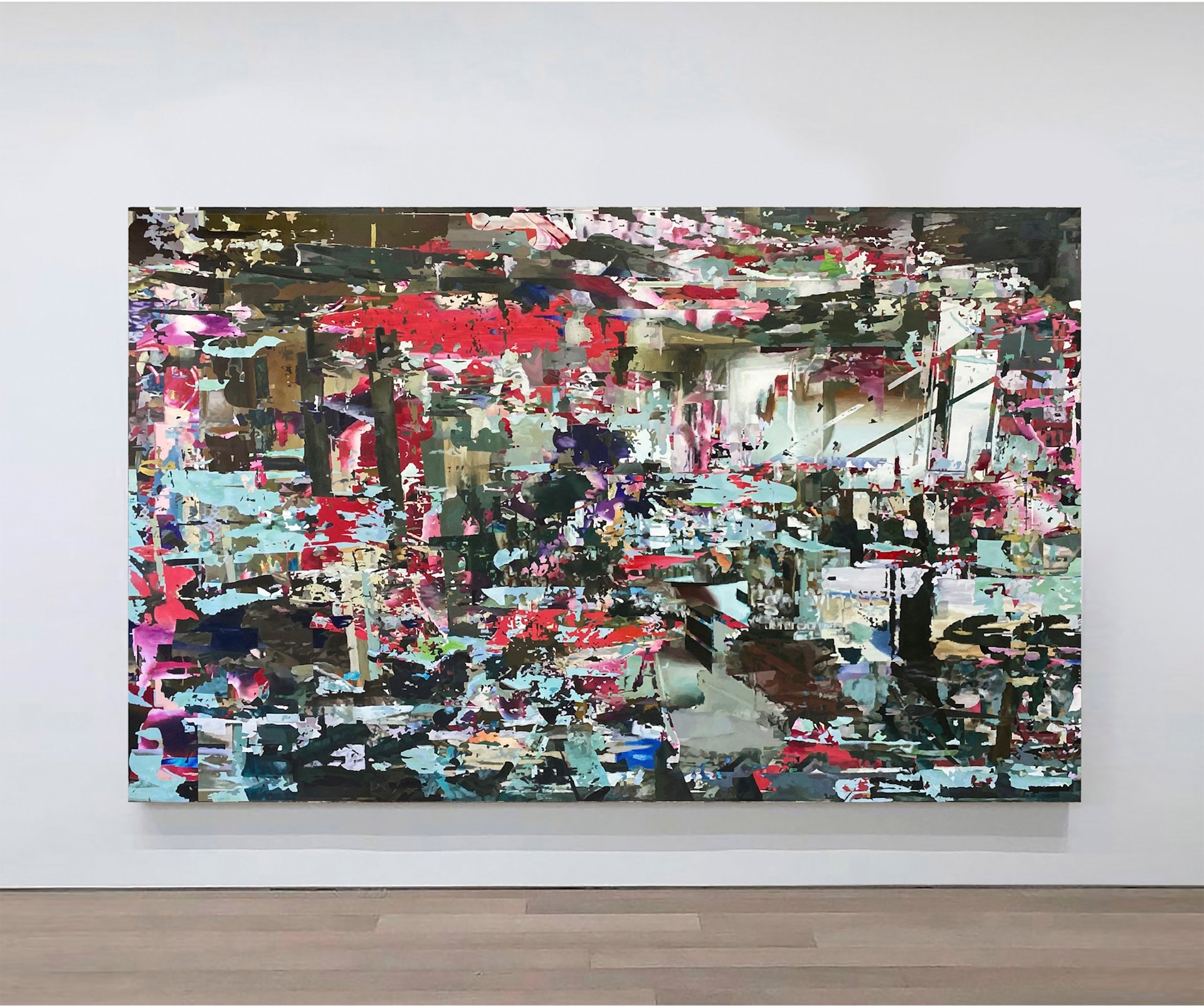
Dmitry Okruzhnov and Maria Sharova, Room. Delamination., 2024 Courtesy the artists
“Constantly repainted walls, mould and peeling plaster, layers of paint and fragments have shaped our artistic method,” Okruzhnov and Sharova tell The Art Newspaper in jointly written answers. “But we were also born in the era of the ubiquity of the internet and technology. As we always like to say: ‘We were in the ruins with the internet in our pocket.’”
Internet terminology informs their projects’ titles. Their 2017 exhibition at XL Gallery in Moscow, 206 Partial Content, was born of their time at Nardom and “Russian society’s demand for a certain reconstruction of the USSR that was, perhaps, imposed by the state” that ultimately led the artists to understand that “not only is history fragmented, but so is the present”. Another project, RM, refers both to the abbreviation for the word room and the command for deleting a computer directory.
“Today's everyday life is like Frankenstein, stitched together from real and virtual fragments,” the artists say. “The internet with an abundance of information penetrates it, permeates everything and sends you flying in the flow. And these strange hybrid rooms-spaces turned out to be very resonant with what is happening. The state of precariousness, instability and constant shift and movement have become symbols of our era. All the events in Russia and the world, the experience of the pandemic and war force us to reassemble our lives piece by piece each time and do not give us the opportunity to hide from everything that is happening.”
A place to refuel
Uslip was inspired to move to Bellport by his mentor, Alanna Heiss, the founder of PS1 Contemporary Art Center (now MoMA PS1) in Queens, who has lived there for decades, and to style The Something Machine as a kunsthalle with an international artistic vision and close ties to the local community. Two more Something Machine partners, Esther Flury and Robert Zungu, also live in Bellport.
The gallery’s mission is to show international artists who have not exhibited in the US before. Featured artists have included Papay Solomon, who grew up in the United Nations refugee camps of the First Liberian Civil War. Uslip says he never considered dropping the collaboration with Okruzhnov and Sharova after Russia invaded Ukraine. “I’m not in the business of cancelling exhibitions or penalising artists based on nationality,” he says.
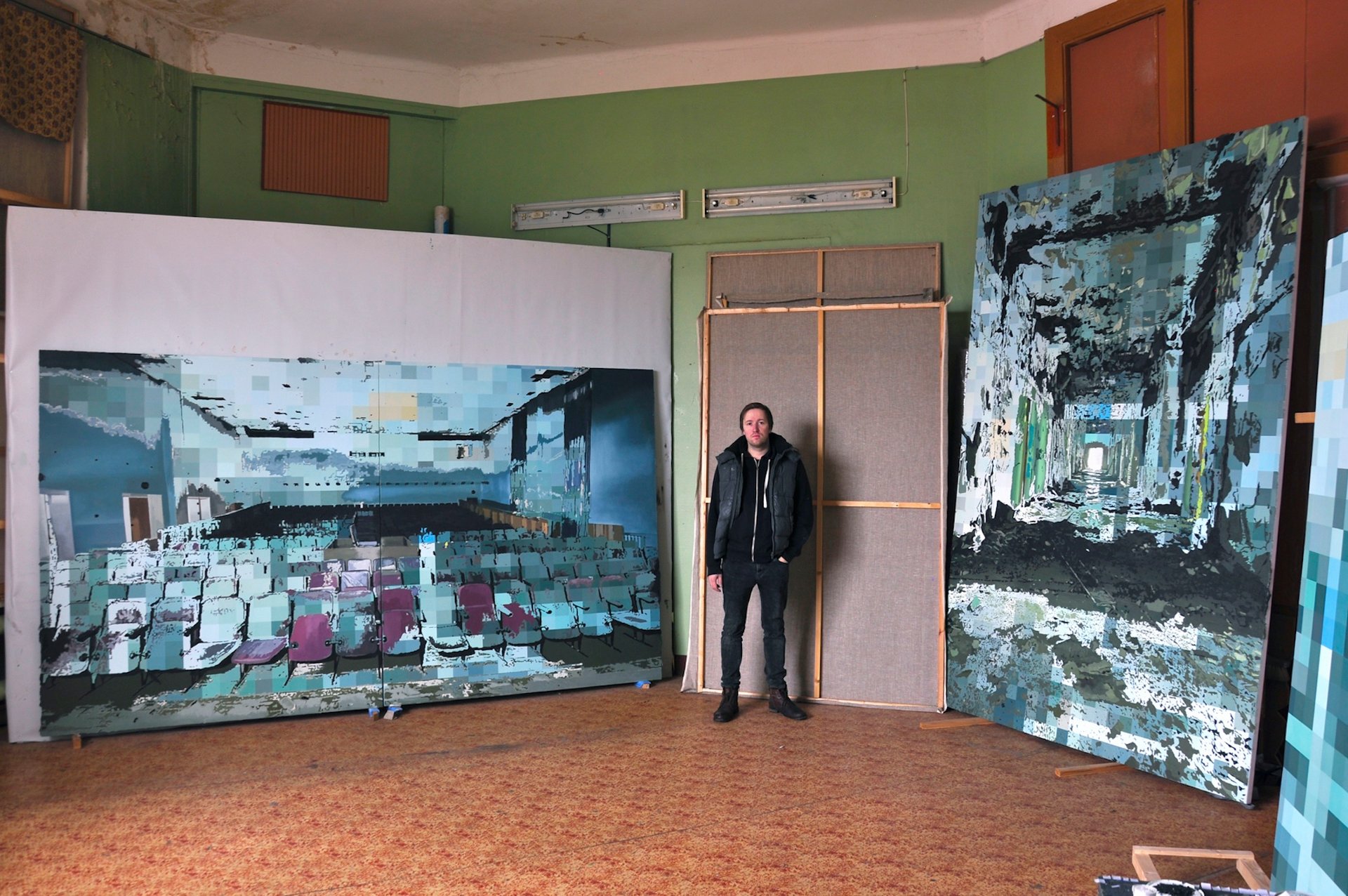
Dmitry Okruzhnov in the duo's former studio in Russia Courtesy the artists
Okruzhnov and Sharova describe the situation for artists in Russia as untenable. “When frank conversations on certain topics can lead to real prison terms”, and even as some continue to act as if “everything is fine and continuing as usual” with exhibitions and fairs still functioning, they say, some manage to “survive in the current reality, while others wait, hoping to live until better times”.
“There are parts of their paintings that from a distance appear as bit rot, fragments of digital information breaking down,” Uslip says. “It skips and slides and stutters across the picture plane. As you get closer it almost looks like confetti. There is a balance between utopia and dystopia. The magic of the paintings is how it flickers between these two.”
The artists say that time and distance have allowed them to realise how their art and lives have merged. “We opened the exhibition RM in March 2020,” they recall. “And a week later the gallery was closed due to the pandemic. This exhibition was the longest of all our exhibitions, because it hung for four months. It all seemed prophetic. Empty rooms in an empty gallery in an empty city in an empty world.”
The experience of moving to the US, they say, has been “similar to our canvases, because we have to reassemble our lives”.


